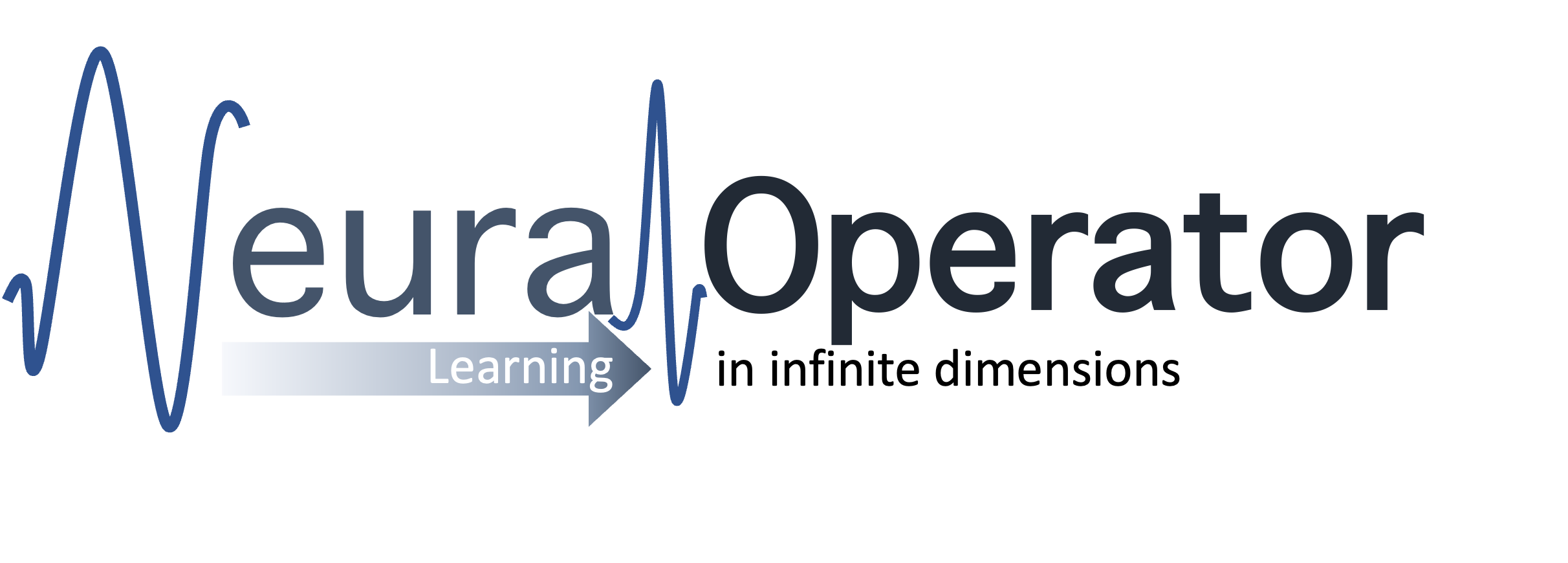Neural Operators in PyTorch

NeuralOperator is a comprehensive PyTorch library for learning neural operators, containing the official implementation of Fourier Neural Operators and other neural operator architectures.
NeuralOperator is part of the PyTorch Ecosystem, check the PyTorch announcement!
Unlike regular neural networks, neural operators enable learning mapping between function spaces, and this library provides all of the tools to do so on your own data. Neural operators are resolution invariant, so your trained operator can be applied on data of any resolution.
Quickstart
This guide will walk you through the standard ML workflow of loading data, creating a neural operator, training it on the data and saving the trained model for later use. (Check out Examples for more info)
First install the library pip install neuraloperator (see Installing NeuralOperator for more options).
To create a Fourier Neural Operator model:
from neuralop.models import FNO
operator = FNO(
n_modes=(16, 16),
hidden_channels=64,
in_channels=2,
out_channels=1
)
To save the weights of the trained model:
model.save_checkpoint(save_folder='./checkpoints/', save_name='example_fno')
And to load the weights later:
from neuralop.models import FNO
model = FNO.from_checkpoint(save_folder='./checkpoints/', save_name='example_fno')
neuraloperator comes prepackaged with an example dataset of flows governed by the Darcy flow equation.
To import the data:
import torch
from neuralop.data.datasets import load_darcy_flow_small
train_loader, test_loaders, data_processor = load_darcy_flow_small(
n_train=1000,
batch_size=32,
n_tests=[100],
test_resolutions=[32],
test_batch_sizes=[32],
)
Similar to the API provided by torchvision, this dataset includes training and test data for use in standard PyTorch training loops,
as well as a preprocessor object that automates the transforms to convert the data into the form best understood by the model.
We provide a Trainer object that automates the logic of a basic neural operator training loop to speed up experimentation (see :doc: auto_examples for more information).
from neuralop.training import Trainer
# Create the trainer
trainer = Trainer(
model=model,
n_epochs=20,
data_processor=data_processor,
verbose=True)
# train the model
trainer.train(
train_loader=train_loader,
test_loaders=test_loaders,
optimizer=optimizer,
scheduler=scheduler,
regularizer=False,
training_loss=train_loss,
eval_losses=eval_losses
)
Weight tensorization is also provided out of the box: you can improve the previous models by simply using a Tucker Tensor FNO with fewer parameters:
from neuralop.models import TFNO
operator = TFNO(
n_modes=(16, 16),
hidden_channels=64,
in_channels=2,
out_channels=1,
factorization='tucker',
implementation='factorized',
rank=0.1
)
This will use a Tucker factorization of the weights. The forward pass will be efficient by contracting directly the inputs with the factors of the decomposition. The Fourier layers will have 10% of the parameters of an equivalent, dense Fourier Neural Operator!